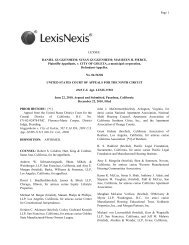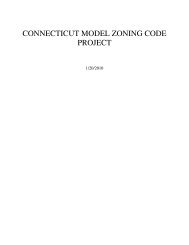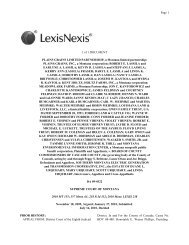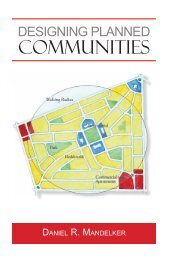Through a Glass Darkly: Measuring Loss Under ... - Land Use Law
Through a Glass Darkly: Measuring Loss Under ... - Land Use Law
Through a Glass Darkly: Measuring Loss Under ... - Land Use Law
You also want an ePaper? Increase the reach of your titles
YUMPU automatically turns print PDFs into web optimized ePapers that Google loves.
MEASURING LOSS UNDER MEASURE 37 579<br />
B. Criticisms of the Exemption Method<br />
1. AN ARBITRARY VALUATION METHOD<br />
<strong>Land</strong> use regulations operate to demark regulated land from unregulated<br />
land. 67 The effect of land use regulations on land values, therefore, affects<br />
two variables: the value of the regulated land and the value of the unregulated<br />
land. The effects of the regulation may have differing consequences<br />
on the value of unregulated and regulated land. As Jaeger explains:<br />
[I]n both of these land markets, price adjustments will occur as a result of the regulation<br />
. . . [and] these changes will give rise to market adjustments and a price differential,<br />
or price wedge, between the two land markets—one that will equal the negative<br />
price adjustment (if any) in one market plus the positive change in the other market. 68<br />
The exemption method is not an accurate method of quantifying loss<br />
caused by land use regulations simply because, while purporting to capture<br />
only the loss to regulated land, in truth, it captures the price wedge<br />
between these two variables. In his paper Jaeger draws an analogy with a<br />
boat tied to a costal pier, and suggests that, “[if] we notice, after a period<br />
of hours, that the level of the boat is now below the level of the pier, we<br />
are unlikely to ask: did the pier move up or did the boat move down” 69<br />
In such a scenario we intuitively appreciate that we are dealing with<br />
one constant, the pier, and one variable, the boat. Therefore to measure<br />
variance of one variable—or the extent to which the boat has fallen—<br />
one merely has to measure the current difference (in length/distance)<br />
between the two. However, such intuition cannot be applied to the loss<br />
caused by land use regulations. As we have two variables, both potentially<br />
affected by the relevant regulation, we must question whether the<br />
price differential is due to an increase in value of one of the land markets,<br />
a decrease in value of the other land markets, or a combination of<br />
both. 70 To determine the “reduction in the fair market value” of the<br />
affected property it is essential to be able to separate the “effect . . . [of<br />
the regulation] on prices of the regulated lands from the effect on prices<br />
for unregulated lands.” 71<br />
67. Of course land regulations do not operate in a vacuum and the “unregulated”<br />
land is likely to be regulated in the sense that it is covered by some regulations. The<br />
point is the unregulated land it is not regulated by the regulation in question.<br />
68. William K. Jaeger, The Effects of <strong>Land</strong> <strong>Use</strong> Regulations on Property Values, 36<br />
ENVTL. L. 105, 109 (2006).<br />
69. Id.<br />
70. The effects of a regulation, of course, are only one of a number of components<br />
which make up the land’s value. In the following analysis, to highlight the effect of land<br />
use regulations, it is assumed that the regulation in question is acting in a vacuum and<br />
that the increase or decrease in land value is entirely derivative of the regulation.<br />
71. Jaeger, supra note 68, at 12.<br />
ABA-TUL-07-0701-Sullivan.indd 579<br />
9/18/07 10:43:39 AM



